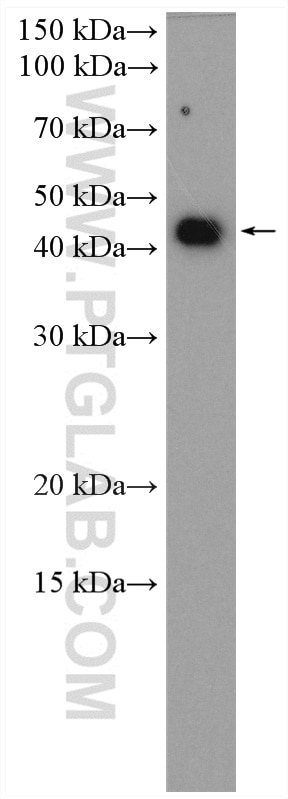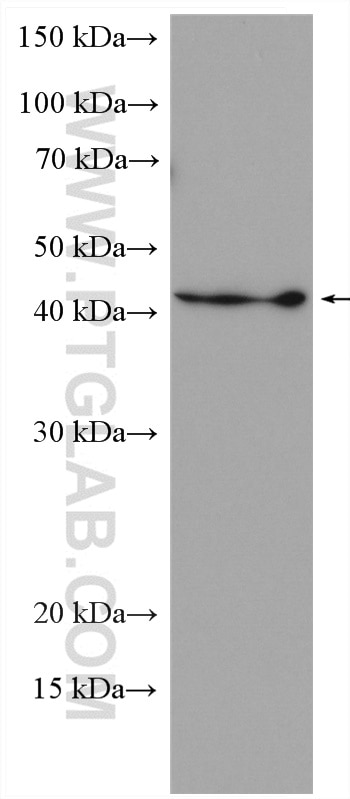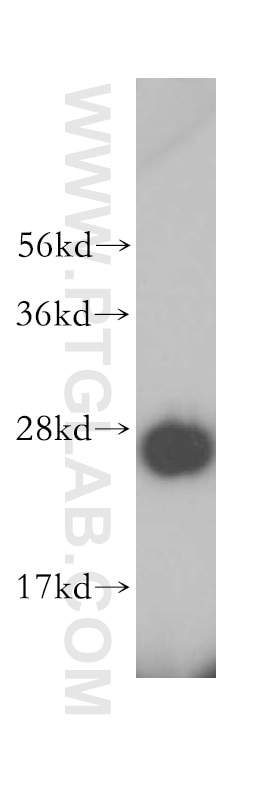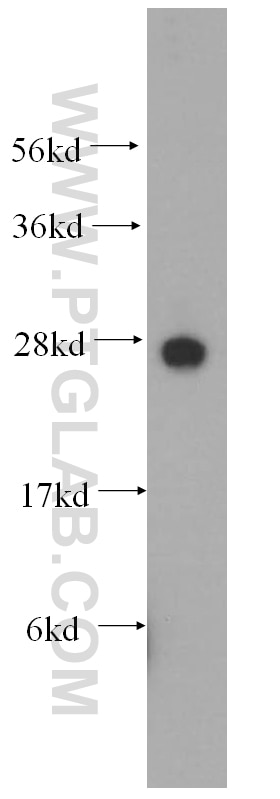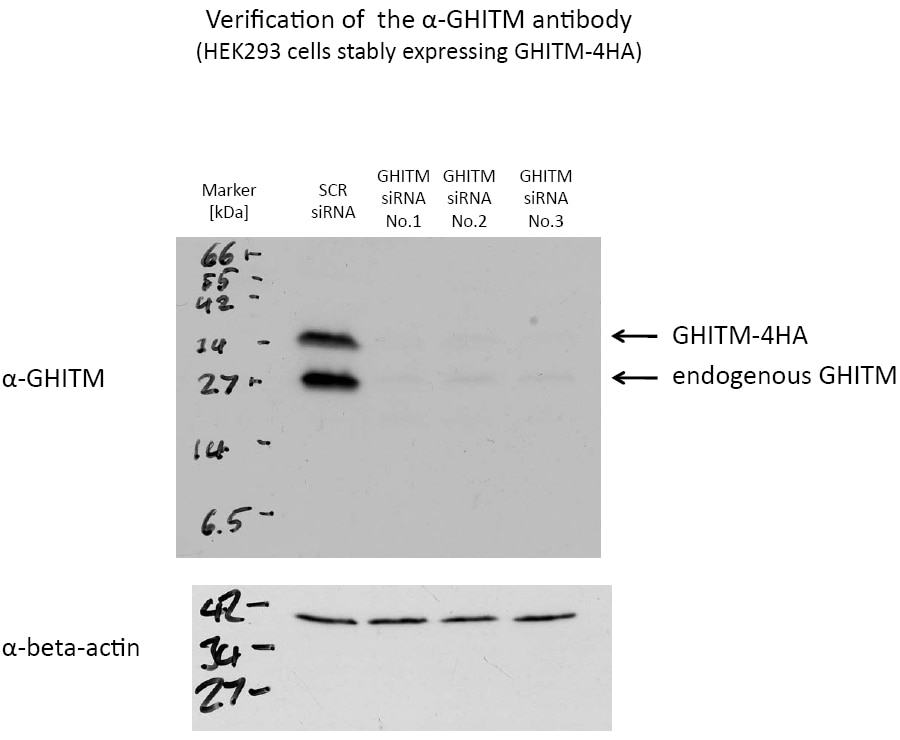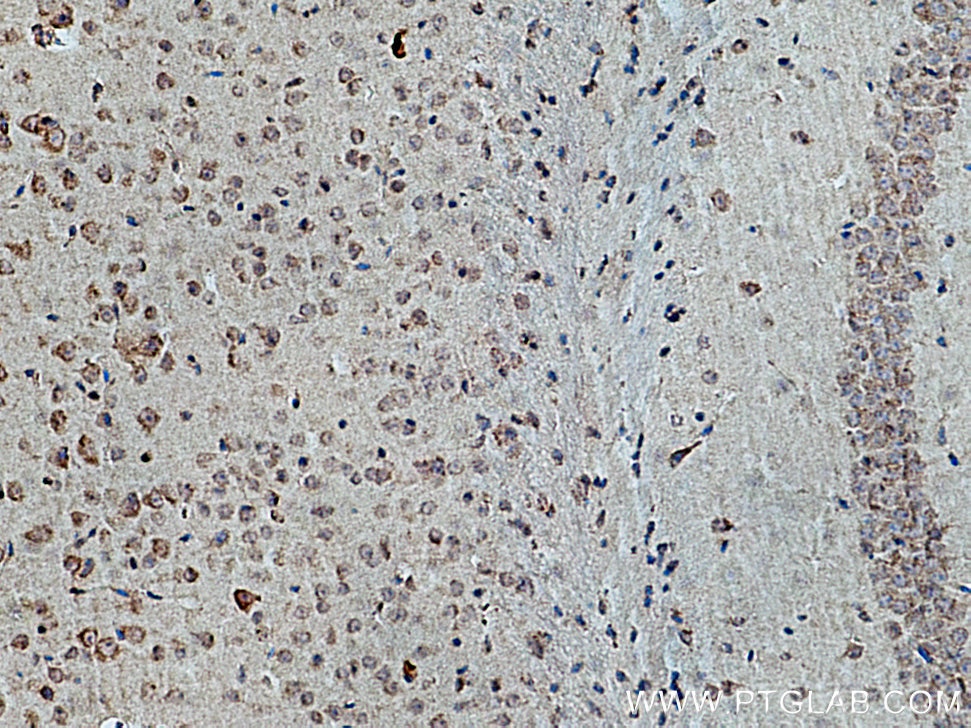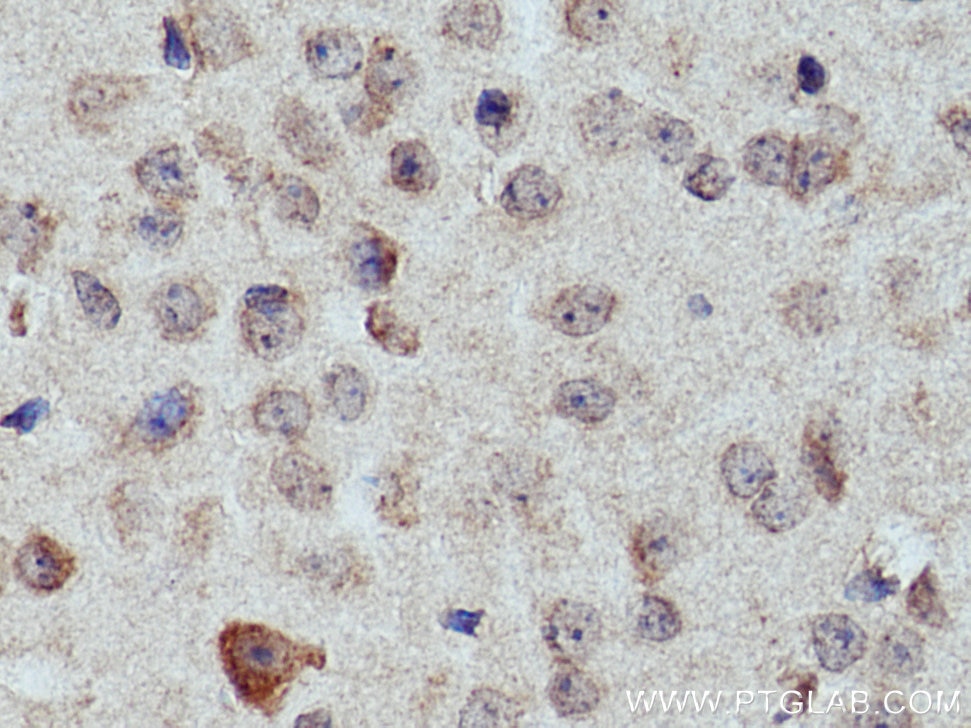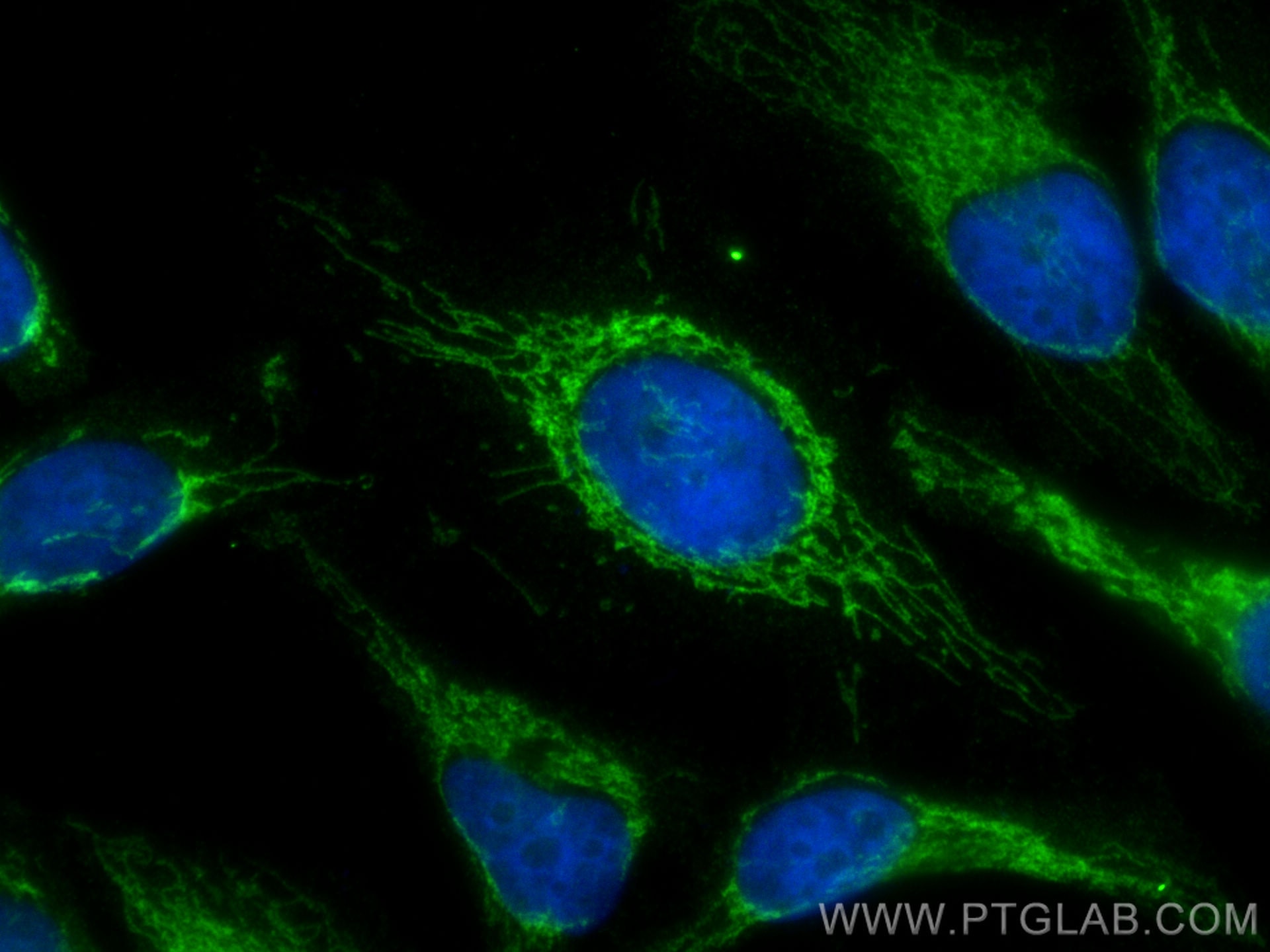- Phare
- Validé par KD/KO
Anticorps Polyclonal de lapin anti-GHITM
GHITM Polyclonal Antibody for WB, IF, IHC, ELISA
Hôte / Isotype
Lapin / IgG
Réactivité testée
Humain, souris
Applications
WB, IHC, IF/ICC, ELISA
Conjugaison
Non conjugué
N° de cat : 16296-1-AP
Synonymes
Galerie de données de validation
Applications testées
| Résultats positifs en WB | tissu hépatique de souris, cellules HEK-293, cellules HeLa, cellules SH-SY5Y |
| Résultats positifs en IHC | tissu cérébral de souris, il est suggéré de démasquer l'antigène avec un tampon de TE buffer pH 9.0; (*) À défaut, 'le démasquage de l'antigène peut être 'effectué avec un tampon citrate pH 6,0. |
| Résultats positifs en IF/ICC | cellules HeLa, |
Dilution recommandée
| Application | Dilution |
|---|---|
| Western Blot (WB) | WB : 1:200-1:1000 |
| Immunohistochimie (IHC) | IHC : 1:50-1:500 |
| Immunofluorescence (IF)/ICC | IF/ICC : 1:200-1:800 |
| It is recommended that this reagent should be titrated in each testing system to obtain optimal results. | |
| Sample-dependent, check data in validation data gallery | |
Applications publiées
| KD/KO | See 1 publications below |
| WB | See 5 publications below |
Informations sur le produit
16296-1-AP cible GHITM dans les applications de WB, IHC, IF/ICC, ELISA et montre une réactivité avec des échantillons Humain, souris
| Réactivité | Humain, souris |
| Réactivité citée | Humain, souris |
| Hôte / Isotype | Lapin / IgG |
| Clonalité | Polyclonal |
| Type | Anticorps |
| Immunogène | GHITM Protéine recombinante Ag9482 |
| Nom complet | growth hormone inducible transmembrane protein |
| Masse moléculaire calculée | 345 aa, 37 kDa |
| Poids moléculaire observé | 42 kDa, 25-27 kDa |
| Numéro d’acquisition GenBank | BC010354 |
| Symbole du gène | GHITM |
| Identification du gène (NCBI) | 27069 |
| Conjugaison | Non conjugué |
| Forme | Liquide |
| Méthode de purification | Purification par affinité contre l'antigène |
| Tampon de stockage | PBS avec azoture de sodium à 0,02 % et glycérol à 50 % pH 7,3 |
| Conditions de stockage | Stocker à -20°C. Stable pendant un an après l'expédition. L'aliquotage n'est pas nécessaire pour le stockage à -20oC Les 20ul contiennent 0,1% de BSA. |
Informations générales
GHITM, also known as MICS1, TMBIM5 or DERP2, is a mitochondrial protein which localizes in the inner membrane. GHITM is involved in mitochondrial morphology in specific cristae structures and the apoptotic release of cytochrome c from the mitochondria (PMID: 18417609). The gene of GHITM maps to chromosome 10q23.1, and encodes a 345-amino-acid protein with a calculated molecular mass of 37 kDa. The apparent molecular weight has been reported to be 42 kDa, the increased size in the protein may be due to post-translational modifications (PMID: 11416014; 16412389). GHITM can be cleaved into smaller forms of 23-27 kDa (PMID: 16412389; 18417609).
Protocole
| Product Specific Protocols | |
|---|---|
| WB protocol for GHITM antibody 16296-1-AP | Download protocol |
| IHC protocol for GHITM antibody 16296-1-AP | Download protocol |
| IF protocol for GHITM antibody 16296-1-AP | Download protocol |
| Standard Protocols | |
|---|---|
| Click here to view our Standard Protocols |
Publications
| Species | Application | Title |
|---|---|---|
Nat Commun Early macrophage response to obesity encompasses Interferon Regulatory Factor 5 regulated mitochondrial architecture remodelling | ||
Cells Transmembrane BAX Inhibitor-1 Motif Containing Protein 5 (TMBIM5) Sustains Mitochondrial Structure, Shape, and Function by Impacting the Mitochondrial Protein Synthesis Machinery.
| ||
Life Sci Alliance TMBIM5 loss of function alters mitochondrial matrix ion homeostasis and causes a skeletal myopathy. | ||
J Cell Mol Med GHITM regulates malignant phenotype and sensitivity to PD-1 blockade of renal cancer cells via Notch signalling |
